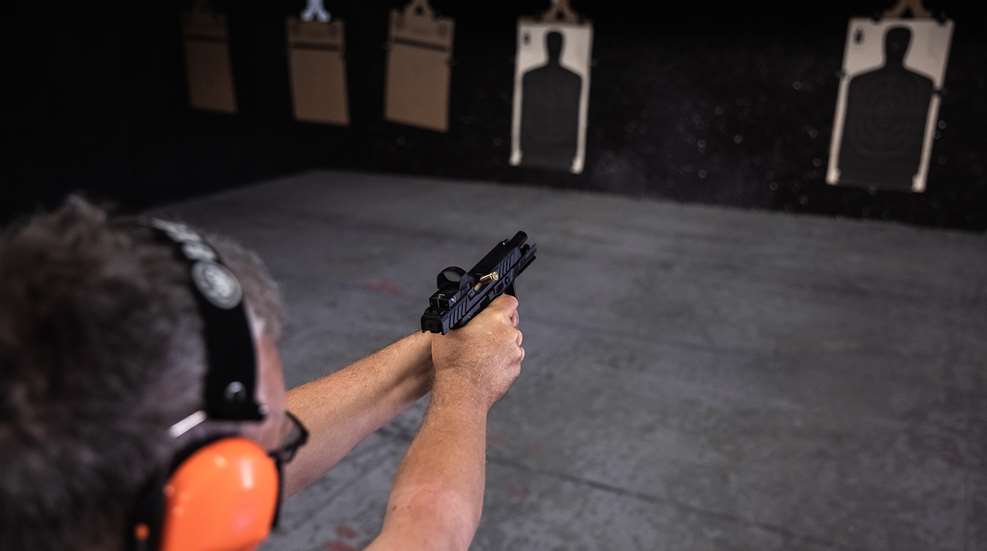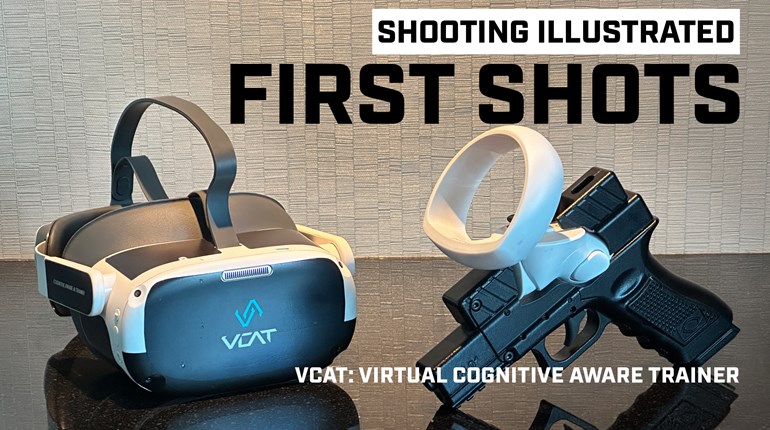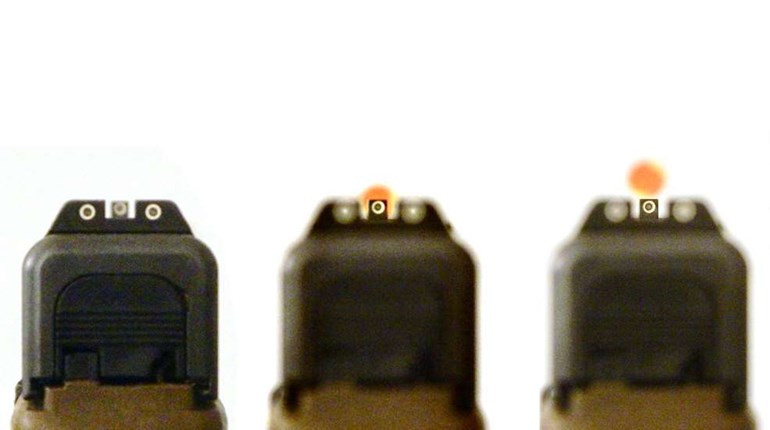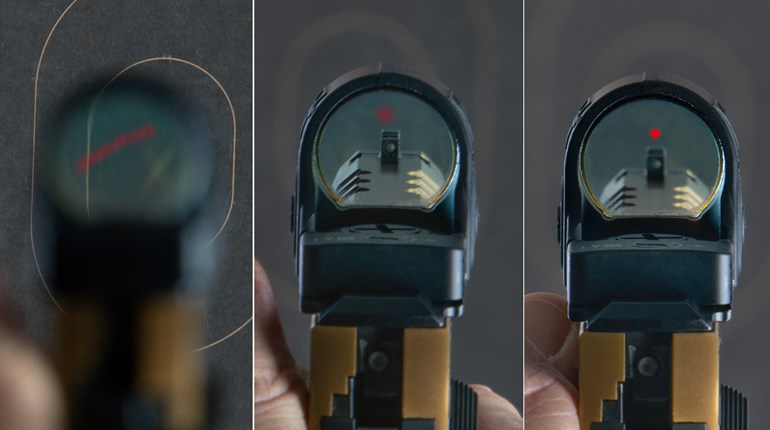
If desirable round placement is defined as ‘hitting what you’re aiming at, in the amount of time allocated to make that shot,’ then when it comes to shooting performance, most firearms instruction is focused on prepping for that shot. A stable firing stance, positive grip, sight alignment and a good trigger press are part and parcel of the fundamentals of desirable round placement.
Some shooting schools place an added focus on follow-through after the shot breaks, such as clicking the trigger back to reset, as opposed to pinning it to the rear of the trigger guard, getting visual focus back on those sights, and the like. More emphasis is placed, especially with entry-level shooters, and justifiably so, in getting them to readily manage an explosion at the end of their arm and all the while safely maintaining good muzzle discipline, aligning the sights and controlling the trigger to achieve desirable shot placement. All of this is a considerable volume of front-end work effort.
Line of Demarcation
A division of labor for most novice shooters is delineated by the boom. The boom is what physiologically and psychologically separates all that happens before the shot breaks from everything that occurs after it breaks. At best, the novice shooter can juggle the chain saw, bowling pin and tennis ball of what it takes to shoot well prior to the boom. However, that’s not the full story of ongoing successful shot placement.
Moving further up the shooting-skills-development ladder is to place equal value and focus on the work effort not only before the shot and after the shot but also during the shot.
Becoming a better shooter is seeing what needs improvement and then working on it. However, you can’t fix what you can’t see. Watching the sights all the way from pre-boom, through boom and after boom provides the visual input necessary to make improvements and further shooting performance advancements.
You can plant the best tree in the best soil and water it every day, but a tree needs time to grow. The same applies to becoming a better shooter. It’s not an overnight process. It takes time to build that visual acuity which is developed over time and with plenty of reps.
Before, During and After
It is necessary to click off those fundamental pre-ignition check points to include a clean presentation, alignment with your dominant eye, (by bringing the gun to that eye, not your head down to the gun), maintaining a positive grip, establishing overall muzzle control, stability, and last but certainly not least a steady trigger press without disturbing muzzle-target orientation all the way to the boom. All of which describe the fundamentals work effort prior to and including the boom.
During the boom it is recommended to maintain visual control of the sights, ‘watching the movie’ as it where, of the launch from hold and rise of the sights. Observing the sights during the shot break is an integral aspect of processing useful information.
Equally as critical as the ‘pre-boom’ work effort and the ‘during boom’ work effort is the ‘post-boom’ or after shot work effort. What did the sights do? How high up did they rise? Did they stay at 6- and 12-o’clock? Did they return exactly on target, did you feel recoil impulse (transfer of energy) or impact (jarring or energy stop-flow) et al.
As the sights are moving back down into position and you’re working the trigger back to reset and controlling the muzzle, it is important to not make any grip changes whatsoever and maintain that initial control of the visual, tactile and physical processing. After the shot you want to stay on the sights, maintain your grip pressure, alignment and hold all the way through and including prep for the next shot. Your mental focus on all this incoming information is what allows you to continually monitor and maintain good control before, during and after the shot.
Each phase of work effort; pre-boom, at-boom and post-boom should share equal mental and mechanical (physical) focus as part of the shooting process throughout the firing of a single round.
The most effective mental approach, conducive to desirable round placement, is a seamless progression of work effort throughout and including all three shot phases.
One Task at a Time
Looking at it from a 30,000-foot mental processing perspective, most shooters make the mistake of saying to themselves “Oh yeah, OK it’s three rounds…” so they think of ‘three rounds’ as a single process as opposed to one round here, another round there, and another round there with each round being its own single seamless applied fundamentals work-effort through the pre-boom, boom and post-boom of each individual round.
The most experienced shooters will tell you that after a while there’s no need whatsoever to think about the shooting process, and at their level that is correct. However, the remainder of us normal earth-walkers who are not quite yet at that level need to give our minds something to chew on throughout the process. Either with or without thought, it’s best to mentally break the task down to one round at a time. Complete each task well, and then move on to the next task trying to avoid having one foot in two separate canoes mentally.
Before boom, at boom and after boom are three separate periods of time requiring a seamless shooting progression maintaining good overall muzzle and fire control by applying all the fundamentals. Seasoned shooters are well-aware that changing grip pressure, losing visual control of your sights, losing target alignment, losing hold, making a poor trigger press, letting up on your mental focus and other common shooting errors can occur at any time during this three-phase process.
As the shooter’s skill develops, emphasis of the fundamentals should be equally distributed throughout the shooting cycle to include before the shot, during the shot and after the shot. Some would say even more so after the break.
Prepping for the next shot, (from the novice perspective), is part and parcel of the same shot. The consummate professional, using the mental approach of an overall processing perspective, views the after shot work effort as not part of the next shot, but as part of the current shot.




































